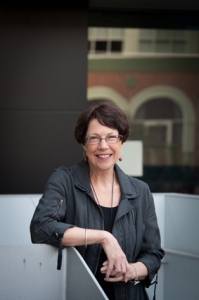New research shows hip fracture rates declining
Research news
Deakin University research has found a drop in hip fracture rates in people over 55.
Researchers with Deakin’s School of Medicine based at Barwon Health analysed data from the Geelong Osteoporosis Study, a long-term study involving men and women living in the Barwon Statistical Division in southeastern Australia, and found that hip fracture rates had decreased by eight per cent for men and 31 per cent for women from 1994 to 2007.
While the rates of hip fracture had declined, the actual number of hip fractures had increased by 53 per cent for men (100 to 153) and 4.4 per cent for women (319 to 333) because of the expanding and ageing population.
Deakin’s Associate Professor Julie Pasco said that even with the increase in the actual number of hip fractures the study’s findings were an encouraging sign.
“Hip fractures are the most debilitating and costly fractures and lead to disability, loss of independence and, sometimes, death. So it is great to see that the fracture rates are declining,” she said.
“Our results reflect a trend being reported by a number of other Western countries including Canada, the United States, Denmark and Switzerland.”
Associate Professor Pasco said that a number of factors could have contributed to the drop in fracture rates.
“Improvements in osteoporosis medications and their increased use may have contributed to the decline,” she said.
“We also found an increase in body weight, with consequent increases in bone mineral density at the hip that may have contributed to the decline in hip fracture rates.
“The link between body weight and fracture risk is complex but weight gain in non-obese individuals tends to increase bone formation through mechanical loading and hormonal links between fat cells and the skeleton.”
The results of the study, ‘Changes in hip fracture rates in southeastern Australia spanning the period 1994-2007’ are published online in the Journal of Bone and Mineral Research (accepted articles section) and will appear in the Journal’s July print edition.
About the Geelong Osteoporosis Study
The Geelong Osteoporosis Study (GOS) started in 1992. It is a population-based study designed to investigate osteoporosis and identify risk factors for fracture.
The GOS uses radiology reports to identify all fractures that occur in the Barwon Statistical Division (a region surrounding Geelong, with a population of 259,000).
The study has also recruited large cohorts of men and women (1500 men and 1700 women) who were selected at random from electoral rolls. The participants attend the study centre at Barwon Health every few years and are monitored for their overall health, diseases and lifestyle choices over time.
Share this story
 Associate Professor Julie Pasco
Associate Professor Julie Pasco
